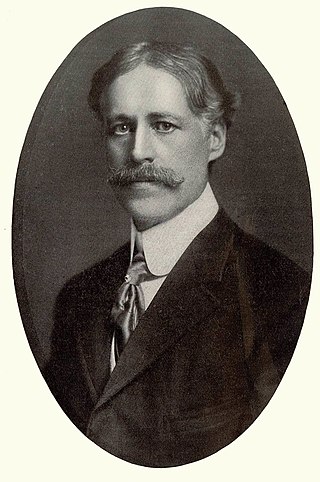
William Ordway Partridge was an American sculptor, teacher and author. Among his best-known works are the Shakespeare Monument in Chicago, the equestrian statue of General Grant in Brooklyn, the Pietà at St. Patrick's Cathedral in Manhattan, and the Pocahontas statue in Jamestown, Virginia.
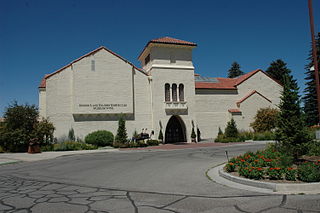
The Springville Museum of Art in Springville, Utah, United States is the oldest museum for the visual fine arts in Utah. In 1986, the building was listed on the National Register of Historic Places. As of 2022, the museum's director is Emily Larsen.

Cyrus Edwin Dallin was an American sculptor best known for his depictions of Native Americans. He created more than 260 works, including the Equestrian Statue of Paul Revere in Boston; the Angel Moroni atop Salt Lake Temple in Salt Lake City; and Appeal to the Great Spirit (1908), at the Museum of Fine Arts, Boston. He was also an accomplished painter and an Olympic archer.

James Edward Kelly was an American sculptor and illustrator who specialized in depicting people and events of American wars, particularly the American Civil War.

Appeal to the Great Spirit is a 1908 equestrian statue by Cyrus Dallin, located in front of the Museum of Fine Arts, Boston. It portrays a Native American on horseback facing skyward, his arms spread wide in a spiritual request to the Great Spirit. It was the last of Dallin's four prominent sculptures of Indigenous people known as The Epic of the Indian, which also include A Signal of Peace (1890), The Medicine Man (1899), and Protest of the Sioux (1904).
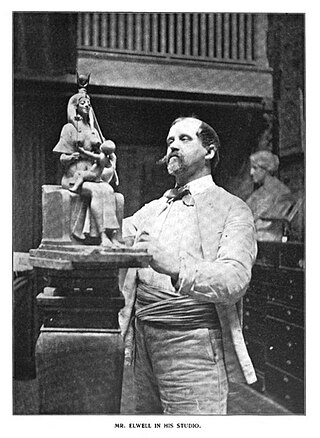
Francis Edwin Elwell was an American sculptor, teacher, and author.

The Brigham Young Monument is a bronzed historical monument located on the north sidewalk of the intersection at Main and South Temple Streets of Salt Lake City, Utah. It was erected in honour of pioneer-colonizer, Utah governor, and LDS Church president Brigham Young who led the Mormon pioneers into the Utah Territory in 1847. The base of the twenty-five-foot monument has the bronze figure of an Indian facing east and that of a bearded fur trapper facing west, both of which preceded the Mormon settlers. On the south side is a bronze bas-relief of a pioneer man, woman, and child, while another bronze plaque has a list of the pioneers who arrived in the Salt Lake Valley on July 24, 1847, and their equipment.
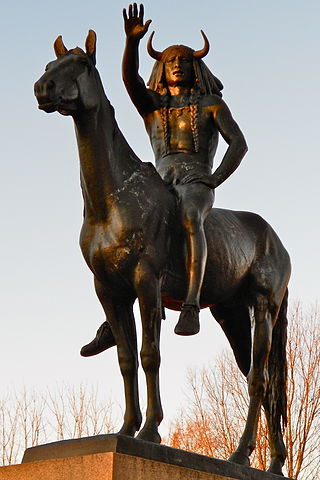
The Medicine Man is an 1899 bronze equestrian statue by Cyrus Edwin Dallin located on Dauphin Street, west of 33rd Street, in Fairmount Park in Philadelphia. The statue portrays an indigenous American medicine man.

A Signal of Peace is an 1890 bronze equestrian sculpture by Cyrus Edwin Dallin located in Lincoln Park, Chicago. Dallin created the work while studying in Paris and based the figure on a member of Buffalo Bill's Wild West Show, which he attended often. He exhibited the original plaster version of the sculpture at the Paris Salon of 1890, where it won honorable mention.

The Cyrus Dallin Art Museum (CDAM) in Arlington, Massachusetts, United States is dedicated to displaying the artworks and documentation of American sculptor, educator, and Indigenous rights activist Cyrus Dallin, who lived and worked in the town for over 40 years. He is well known for his sculptural works around the US including The Scout in Kansas City, Missouri, TheSoldiers' and Sailors' Monumentin Syracuse, New York and The Signal of Peace in Chicago. Locally, he is best known for his iconic Appeal to the Great Spirit and Paul Revere Monument statues, both located in Boston.
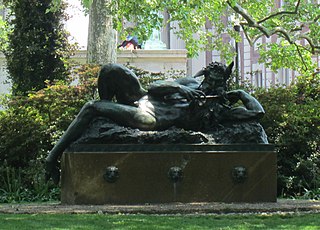
The Great God Pan is a bronze sculpture by American sculptor George Grey Barnard. Since 1907, it has been a fixture of the Columbia University campus in Manhattan, New York City.

Thomas Jefferson is a 1911 bronze statue of a seated Thomas Jefferson created by Karl Bitter for the Cuyahoga County Courthouse in Cleveland, Ohio, United States.

Pierre-Nicolas Tourgueneff was a French animalier sculptor and painter who worked in the late 19th century and early 20th century. He was a cousin of the writer Ivan Sergeyevich Turgenev. He began to exhibit his sculptures at the Salon in 1880 and continued to do so throughout his career.
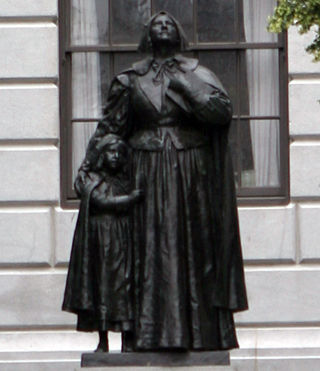
A statue of Anne Hutchinson by Cyrus Edwin Dallin is installed outside the Massachusetts State House, in Boston, Massachusetts, United States.

An equestrian statue of Paul Revere by Cyrus Edwin Dallin is installed at Paul Revere Mall near the Old North Church in Boston, Massachusetts.
Hughes W. Curtis was an American woodcarver, and clay and bronze sculptor.

Massasoit is a statue by the American sculptor Cyrus Edwin Dallin in Plymouth, Massachusetts. It was completed in 1921 to mark the three hundredth anniversary of the Pilgrims' landing. The sculpture is meant to represent the Pokanoket leader Massasoit welcoming the Pilgrims on the occasion of the first Thanksgiving.

General Winfield Scott Hancock (1913) is a sculpture by Cyrus E. Dallin on the east side of the Pennsylvania State Memorial in Gettysburg, Pennsylvania. Winfield Scott Hancock, a Union Army officer in the U.S. Civil War, is one of eight military figures depicted on the monument.

Passing of the Buffalo (1929) is a 9-foot (2.7 m) bronze sculpture of an indigenous man by Cyrus E. Dallin, which rests on a 5-foot-tall gray boulder located in Muncie, Indiana, United States. It is also known as The Last Arrow.























